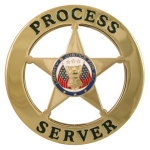When you’re sued on an old debt, it’s easy to imagine appearing on the court date to tell the judge your side of the story.
- I’m not the person who owes this debt
- This debt is too old to be enforced
- I never heard of the person suing me
- I am unable to pay
You imagine the judge considering your argument and challenging the other side to prove otherwise.
It’s a comforting image, but it will never happen if you haven’t taken the first step in defending a lawsuit.
File a written answer
Only an answer on paper, filed with the court clerk, and served on the person suing gets you a platform on your court date.
Courts rely on the written word
Courts move on the basis of paper.
If you haven’t filed an answer in the lawsuit, nothing you say to the judge will change the outcome.
Now, on the odd occasion, a judge may consider arguments made for the first time in a courtroom. It happens just often enough to make me cautious about saying “never”.
But don’t count on it.
If disputing the debt is worth your time showing up at court, then it’s worth filing an answer in your defense.
Don’t think you can simply arrive in court and win on the basis of clever words at trial.
Life of a collection suit
The New York Times’ great feature on the dark world of consumer debt collection had a marvelous flow chart of the progress of collecting an old bill.
Only it was deceptively wrong.
After following the debt collector’s options and outcomes from first collection call to the various resolutions, the graphic showed two wildly different outcomes if the consumer got sued.
One outcome had the consumer telling the judge, “I’ve fallen on hard times and can’t afford to pay my debt“. Result: the consumer loses. Hard times isn’t a legal defense to a collection suit.
The second outcome had the consumer telling the judge: “Make them prove I owe the money“. Result, says the article: the consumer wins!
Not so. You’ll get no chance to tell the judge anything, if you don’t file an answer to the lawsuit.
On time.
Lawsuits require proof
Why the different results for different scripts in the Times‘ scenario? Because, the debt buyer has no proof of the debt.
And the burden of proof in a collection suit lies with the person who filed the suit.
When the collector bought the old account from the original creditor, or an intermediate collector, no supporting documents came with it. The debt buyer got just a spreadsheet with the consumer’s name, account number, and amount due. He has no proof that you owe the debt and no proof that the debt is still enforceable.
No proof, no judgment.
But that little lesson in legal procedure is not the point I want to make here.
My point is telling it to the judge on the court date gets you nothing if you haven’t raised the issue in a written answer.
How to file an answer
Getting an answer on file can be a problem if you don’t have money for a lawyer. I’ve got that.
You can do it yourself.
Many California court forms are available from the Judicial Council.
Lots of courts these days have pro per help desks where you can get guidance on participating in a lawsuit. The California courts maintain an online legal self help site.
Here are links to Bay Area court’s pro per resources:
Check out the available resources in your area to help you file the right paper so you can defend yourself in court.
Also
What happens if there’s a judgment against you
Image courtesy of Flickr and Penn State.






